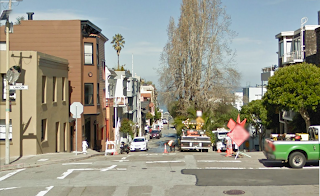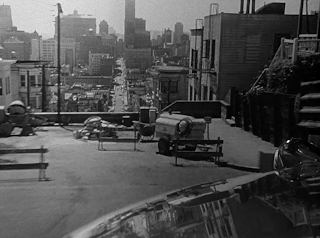Photo by Thomas J. Story from Sunset
When I received the latest issue of Sunset magazine in the mail I thumbed passed the first few articles but stopped on one entitled "The unplugged home," about a San Francisco family who has created a technology-free home. By that I mean this family does things the "old-fashioned way." They don't have TVs, computers or smartphones around the house. Their appliances don't have any LED interfaces. The clocks are all analog and the phone is a rotary dial telephone. The family doesn't have a microwave, but they have a handpress juicer, flour grinder, and everything needed to make foods completely from scratch. They don't even have an electric coffeemaker, but instead they use one of those stovetop coffeemakers. Basically, any modern day electronics the family keeps out of the house.
The family doesn't want to overexpose their kids to modern day technology. They make it clear that their not completely anti-technology - both parents have iPhones that they use sparingly outside the house - but inside their home is supposed to be an escape from technology. Instead of computers or video games, there is plenty of yarn, colored pencils and other materials for arts & craft projects. They have acoustic instruments that the parents and kids can play to make music. Other means of entertainment include board games, cards, reading books (not e-books) and for the parents - being able to sit down and read the entire New Yorker without distractions.
Moe points out the time on his wristwatch instead of his smartphone.
The article made me think of two things.
First, that one of the things I enjoy about watching classic movies from a modern perspective is seeing old-fashioned ways of doing things or items that the majority of us just don't use anymore. I love seeing in old movies offices with no computers, printers, or other electronics and all their cords. Instead every desk in a classic movie is usually very simple, with just a typewriter or notepad. Some other things I enjoy seeing in classic films are people reading newspapers, keeping time on a wind-up watch, making coffee on the stove, keeping notes in a notepad instead of their smartphone, people writing letters (with perfect penmanship of course), cash registers with push buttons, levers, and bells, people cooking from scratch or making anything from scratch. I could go on and on, but the point is, I enjoy watching a world before techno overload.
The second thing the article made me think of is whether or not I could ever go technology free like the family featured in Sunset? I'll admit it. I'm a techno junkie. I have an iPhone that my wife is constantly telling me to put down. I'm so bad at times that I may be using my smartphone, watching the TV and viewing something else on the computer or iPad at the same time! As much as I love the simpler things of the past I love technology! I do admit though that it can become intrusive.
I could never rid my life of all techno clutter, but one of my New Year's resolutions is to be a little more conscious of technology in my life.
Do you think you could go technology free? What old-fashioned things do you enjoy seeing in classic movies and do you do or use any of those old-fashioned things in your modern life?


















































